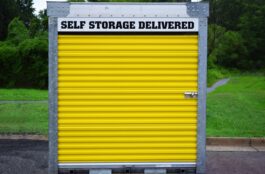The damage caused by a fire has some consequences. Smoke damage is one of the consequences. The building will suffer smoke damage even if the fire is extinguished quickly enough to save the structure. This damage needs to be repaired to make the space habitable and get rid of the smell. Let’s talk about the five types of smoke, what causes them, and how to treat them.
Types of Smoke Damage
Fire is the known cause of smoke damage, but did you know there are different types of fire that can have different effects? Depending on what caused the fire, the smoke and soot will react differently. Electrical faults, smoking, cooking, and accidental fires are the most common causes of fires in homes and businesses. However, the following types of fire smoke may cause specific damage:
Wet Smoke
This term refers to the fumes produced by low-heat, smoldering flames, especially when rubber or plastic products are burned. They emit a strongly unpleasant burnt plastic odor. These smoke plumes are not only thick and dark but also highly damaging. They can also rust and corrode metal items if left for too long. This type is also particularly greasy, making cleanup even more difficult. Cleaning it yourself is frustrating and obstinate, so leave it to professional property damage restoration companies.
Fuel Smoke
Fuel smoke is produced when petroleum, oil, or a substance similar is burned. This form is less likely to be encountered inside a home or business. Oil fume damage is more common in garages or warehouses where petroleum is stored. It has one of the foulest odors and is particularly difficult to clean. Any fabric it touches is probably beyond repair. The settled residue is thick and sticky, sticking to anything it comes into contact with. It’s a true nightmare without professional help. If you need professional assistance, search for “fire restoration near me” to find them.
Protein Smoke
These are the emissions made when burning organic material. It is most frequently encountered during haphazard kitchen endeavors. This type is difficult to deal with because it is mostly invisible. No large black or greasy smears are on your painted or unpainted walls. The only indicators are paint discoloration and a strong odor.
Dry Smoke
Dry smoke from high-temperature fires can quickly spread throughout properties. They are caused mainly by paper or wood, which is why they are frequently associated with house fires. Cleaning up smoke-damaged items is easier because the residue is powdery rather than sticky.
However, its powdery composition is also its main disadvantage. It can sneak into even the smallest spaces in a room, wreaking havoc on the structural stability of your home. It can also destroy your wiring, potentially causing long-term electrical damage in your home. Fortunately, the odor isn’t overpowering, and an experienced team would have no trouble performing an effective cleanup.
Tenant Smoking Residue
Residents who smoke are the most common cause of smoke damage. Contractors and landlords usually deal with odors caused by cigarettes or marijuana in multifamily buildings. Tenants who smoke can cause a lot of damage, from unpleasant smells to significant surface damage. This type of smoke damage usually necessitates extensive cleaning.
Bottom Line
Different factors, such as the fire’s temperature, fuel source, and location, can result in five common types of smoke damage. Each restoration process is slightly different. All items ruined by smoke and fire would have to be replaced in the worst-case scenario. Because of the high cost, this is the last resort solution, but it is required when the damage is severe. The sooner you call a professional after a fire, the less likely you will need to replace everything.


